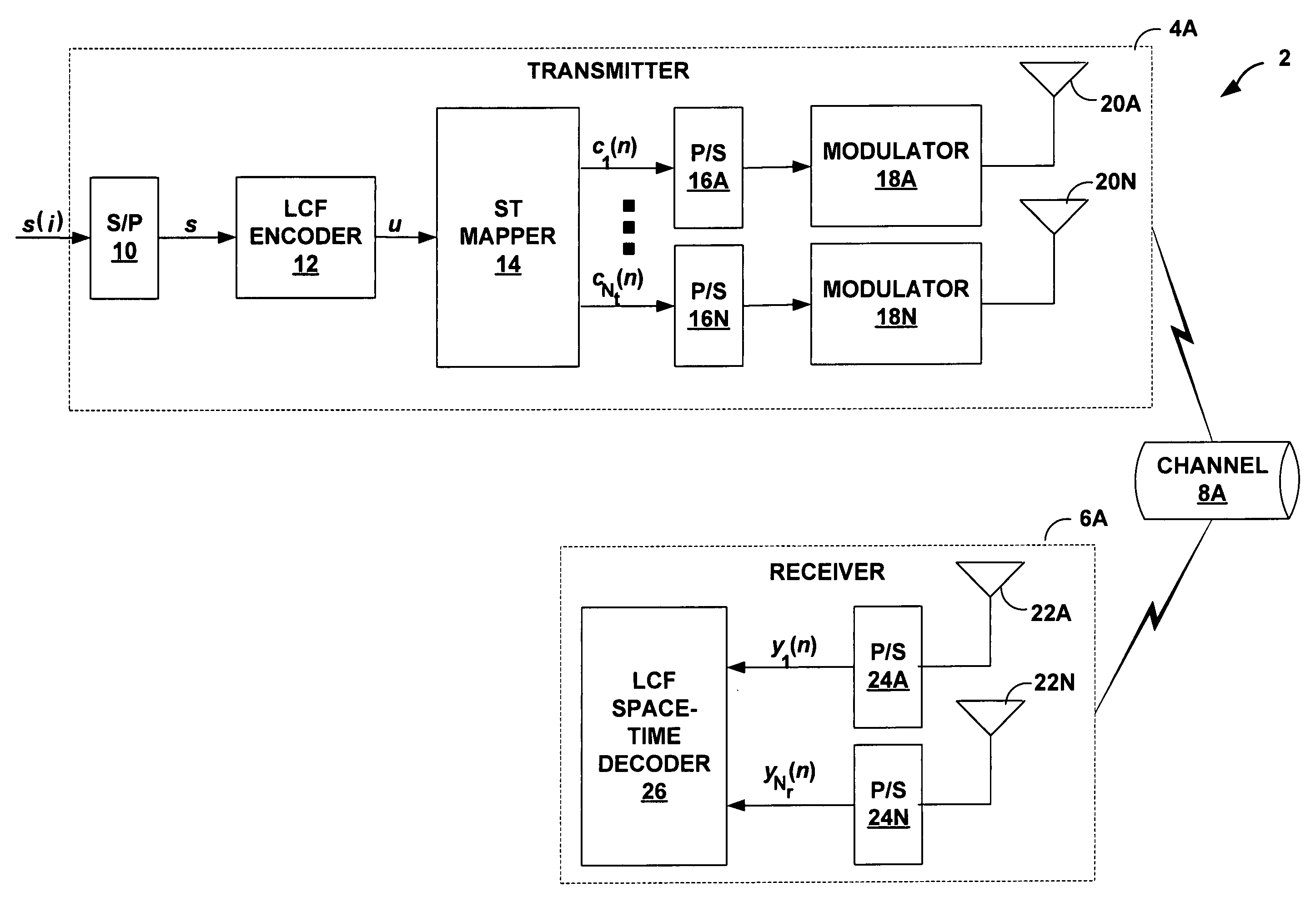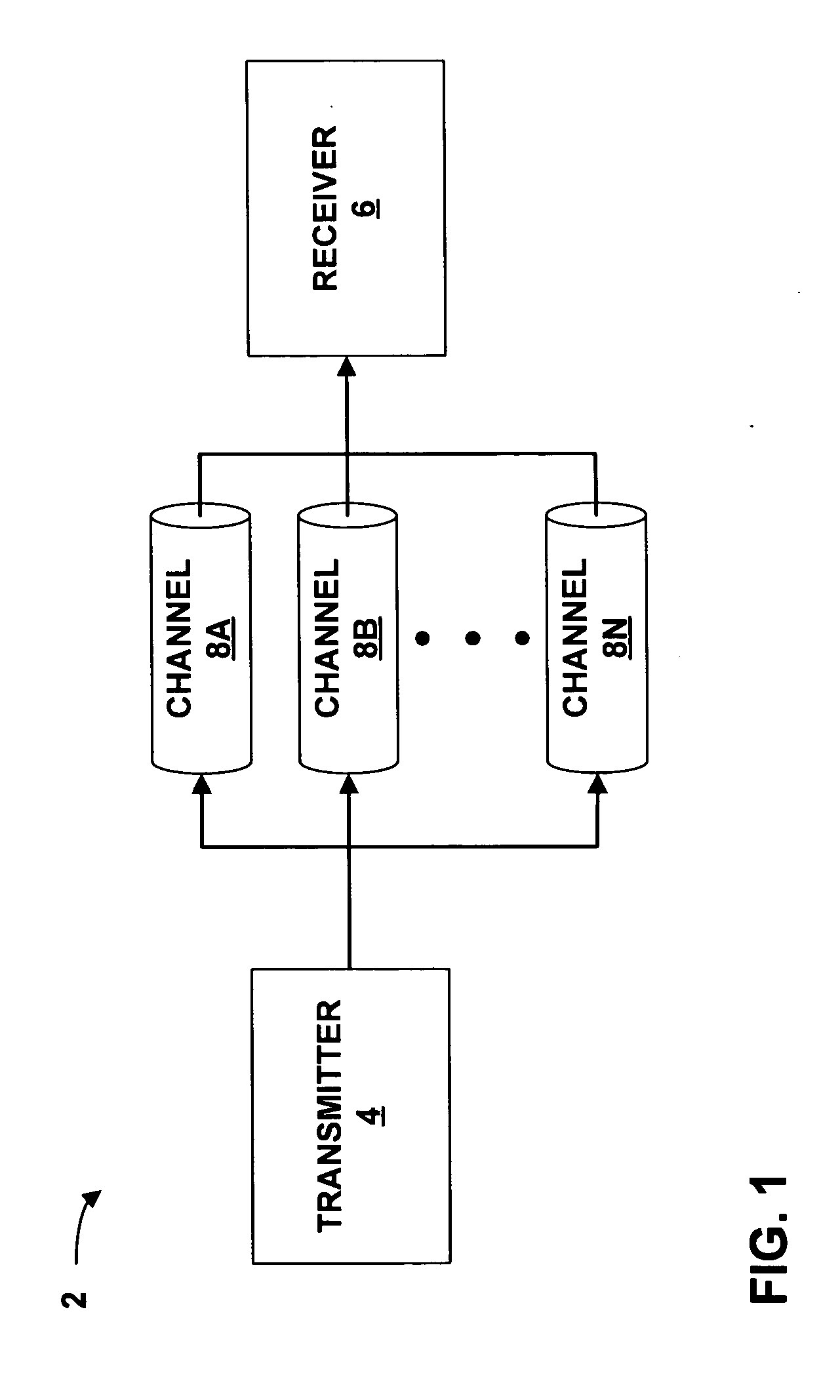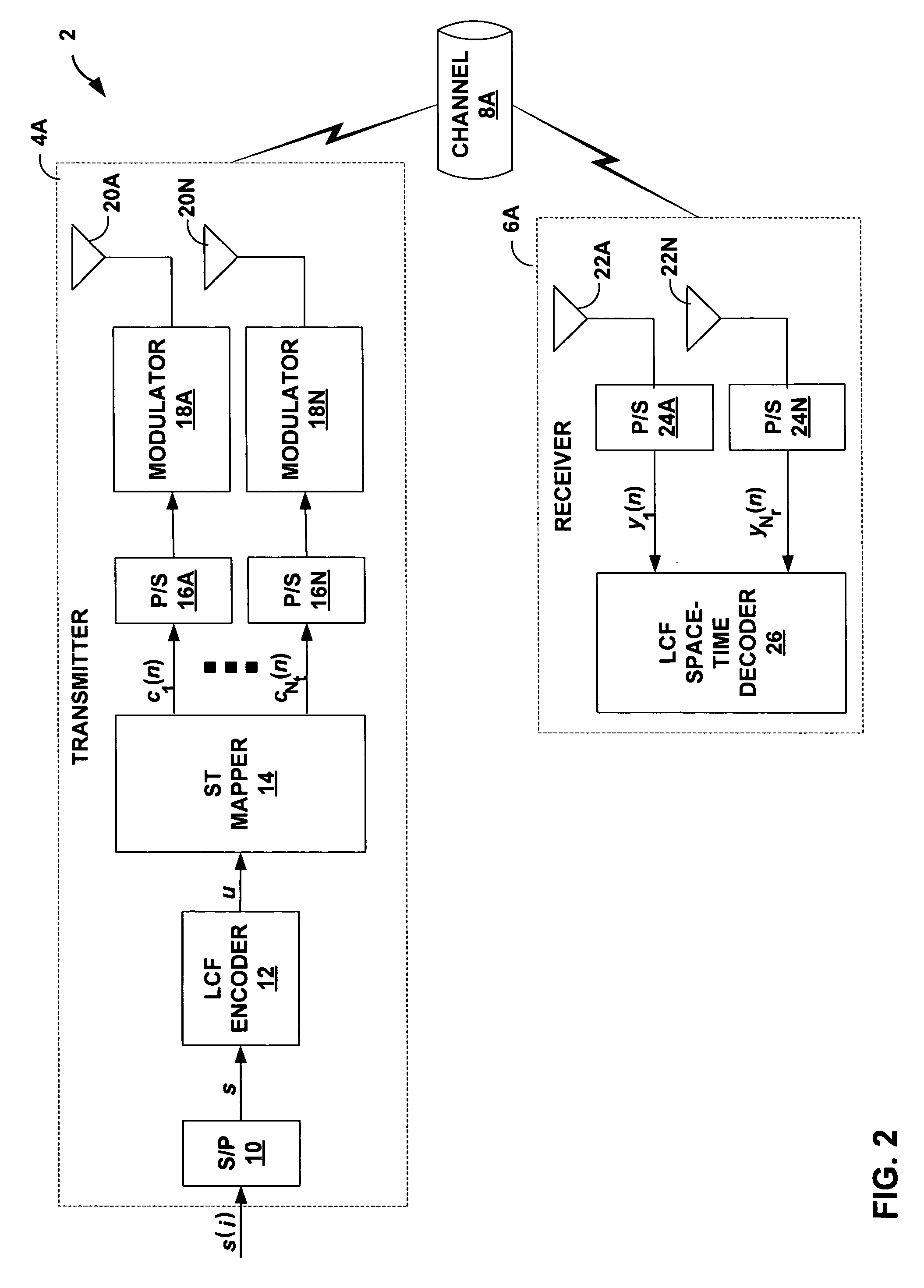Full-diversity, full-rate complex-field space-time coding for wireless communication
a wireless communication and complex field technology, applied in diversity/multi-antenna systems, multi-frequency code systems, digital transmission, etc., can solve the problems of complex decoding, large loss of other st-od codes, and exponential increase in design complexity, so as to reduce decoding complexity, high rate, and high performance
- Summary
- Abstract
- Description
- Claims
- Application Information
AI Technical Summary
Benefits of technology
Problems solved by technology
Method used
Image
Examples
example 1
LCF Repetition Codes
[0123] In order to enable only full diversity, Θ can be constructed to have identical rows, rather than being unitary. Θ having identical rows is given according to equation (45) where 1 represents a vector with all ones and the 1×Nt(L+1) vector θ1T:=[1α . . . αNt(L+1)−1].
Θ=1{circle over (×)}θ1T (45)
[0124] Consequently, for each sub-block sg, each layer ug=Θgsg. Clearly, this is why this specific LCF encoding is referred to as LCF repetition coding. From the definitions of Λ in equation (38) and C in equation (35), after re-arranging the rows of Λ, {overscore (Λ)} is given according to equation (47) where Uμ,g:=diag[uμ(g)uμ(g+Nt) . . . uμ(g+Nt+L)], Jg:=J1diag[1,e−j2π(g−1 / P), . . . e−j2π(g−1)L / P], and [J1]m+1,n+1:=e−j2πmn / (L+1). With the LCF repetition encoder given in equation (45), Uμ,g is given according to equation (47). Λ_=[U1,1J1U2,1J1⋯UNt,1J1UNt,2J2U1,2J2⋯UNt-1,2J2⋮ ⋯⋮U2,NtJNtU3,NtJNt⋯U1,NtJNt](46)Uμ,g=βμ-1(θ1Tsμ)IL+1,∀g,μ∈[1,Nt](47)
[0125]...
example 2
Two-Antenna Two-Ray Channel
[0127] In this example, FDFR transmissions are designed over two-ray channels with (Nt, L)=(2, 1) and P=4. As a result, the matrix Λ is given according to equation (48). Λ=[c1(1)c1(1)c2(1)c2(1)c1(2)jc1(2)c2(2)jc2(2)c1(3)-c1(3)c2(3)-c2(3)c1(4)-jc1(4)c2(4)-jc2(4)](48)
[0128] Using the ST mapping to form the array given in equation (35) with LCF encoded blocks u1=Θs1, u2=βΘs2 the determinant of Λ in terms of sg and (Θ, β) is given according to equation (49). det(Λ)=2j(-2∏n=14 θnTs1+β2(∏n=12 θnTs1∏n=34 θnTs2+(θ1Ts1)(θ4Ts1)∏n=23θnTs2+(θ1Ts2)(θ4Ts2)∏n=23 θnTs1+∏n=12 θnTs2∏n=34 θnTs1)-2β4∏n=14 θnTs2)(49)
[0129] Equation (49) is a polynomial in βNt with coefficients in (j)(ej2π / Nt)(α) if sg∈[j]. In order to guarantee that all coefficients of βNt in det(Λ) are non-zero ∀s≠s′, Θ is designed according to the methods described in X. Giraud et al. “Algebraic tools to build modulation schemes for fading channels,” ...
PUM
 Login to View More
Login to View More Abstract
Description
Claims
Application Information
 Login to View More
Login to View More - R&D
- Intellectual Property
- Life Sciences
- Materials
- Tech Scout
- Unparalleled Data Quality
- Higher Quality Content
- 60% Fewer Hallucinations
Browse by: Latest US Patents, China's latest patents, Technical Efficacy Thesaurus, Application Domain, Technology Topic, Popular Technical Reports.
© 2025 PatSnap. All rights reserved.Legal|Privacy policy|Modern Slavery Act Transparency Statement|Sitemap|About US| Contact US: help@patsnap.com



